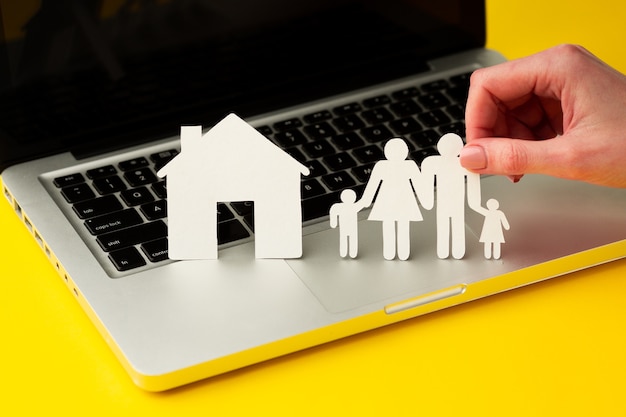Living in a sustainable community offers a unique lifestyle that balances environmental, economic, and social well-being. The main question is whether the rewards of such living outweigh the drawbacks. This article explores the benefits and challenges of residing in a sustainable community, providing a comprehensive view of what it means to live sustainably. Our focus includes insights from various communities, such as Taormina Village, to present a well-rounded perspective.
Pros of Living in a Sustainable Community
Environmental Benefits
One of the leading advantages of living in a sustainable community is the significant reduction in carbon footprint. By utilizing renewable energy sources and encouraging recycling, these communities help conserve natural resources and enhance biodiversity. For example, Taormina Village has adopted extensive green practices that have positively impacted the local ecosystem.
Economic Advantages
Sustainable communities often present various economic benefits. Although the initial investments might be higher, residents save on utilities such as electricity and water. Furthermore, properties in these communities tend to increase in value over time. Sustainable initiatives also lead to job creation and local economic growth, offering more stable employment opportunities in green sectors.
Health and Well-Being
The health advantages of living in a sustainable community are numerous. Cleaner air and water result in fewer health issues and better overall well-being. Residents often have access to organic, locally-sourced foods which promote better nutrition. Additionally, the environment in sustainable communities tends to encourage physical activities, such as walking and cycling, contributing to residents’ fitness levels.
Community Strength and Engagement
Living in a sustainable community can foster stronger bonds among residents. Increased civic participation and regular community events help build a more engaged populace. Additionally, supporting local businesses creates a robust local economy and encourages residents to develop closer relationships with their neighbors.
Technological Innovation
Sustainable communities are often at the forefront of technological advancements. These include adopting renewable energy sources such as solar and wind, implementing smart city technologies, and promoting eco-friendly transportation options like electric vehicles. These innovations not only benefit the environment but also enhance the quality of life for community members.
Cons of Living in a Sustainable Community
Higher Initial Costs
One of the main disadvantages is the higher initial investment required for sustainable infrastructure. Installing solar panels, wind turbines, and other green technologies can be expensive. These costs can be a barrier for many people considering moving to a sustainable community.
Limited Availability
Sustainable communities like Taormina Village are not as widely available, making it challenging for people in some areas to find sustainable living options. Transitioning an existing community to sustainable practices also poses significant challenges, from financial constraints to logistical issues.
Regulatory Challenges
Implementing sustainable practices often involves navigating complex zoning laws and building codes. Some areas may face resistance from traditional utility providers who are not keen on adopting new technologies. Hence, regulatory hurdles can slow down the promotion of sustainability.
Lifestyle Adjustments
Living sustainably often requires changes in behavior and lifestyle. Residents may need to adapt to new ways of conserving energy, water, and other resources. Additionally, there might be social pressure to keep up with the sustainable practices of others in the community, which can be stressful for some individuals.
Economic Benefits of Sustainable Communities
The table below outlines some economic benefits of living in a sustainable community:
| Benefit | Description |
|---|---|
| Cost Savings | Lower utility bills through energy and water conservation. |
| Increased Property Value | Homes tend to appreciate in value over time due to sustainable features. |
| Job Creation | New opportunities in green sectors like renewable energy and sustainable agriculture. |
Conclusion
Living in a sustainable community offers a unique blend of environmental, economic, and social benefits. While the initial costs and lifestyle adjustments may pose challenges, the long-term advantages often outweigh these drawbacks. Sustainable living not only improves personal well-being but also contributes to a healthier planet. As the demand for sustainability grows, more communities like Taormina Village will likely emerge, offering even more options for those looking to live sustainably.
Frequently Asked Questions
1. What is a sustainable community?
A sustainable community is a place where residents live in a manner that is environmentally friendly, economically viable, and socially equitable. These communities prioritize the well-being of current and future generations through sustainable practices and policies.
2. Do sustainable communities cost more to live in?
Initially, living in a sustainable community can be more expensive due to the higher costs of green infrastructure and technologies. However, residents typically save money in the long run on utilities and maintenance.
3. Can sustainable living improve my health?
Yes, sustainable living often promotes better health through cleaner air and water, access to organic foods, and environments that encourage physical activity.
4. Are sustainable communities only available in urban areas?
No, sustainable communities can be found in both urban and rural settings. However, their availability may vary depending on regional development initiatives and policies.
5. How can I transition to living in a sustainable community?
Transitioning involves research and preparation. Look for communities with sustainable practices and consider the associated costs and lifestyle changes. Engaging with local sustainability initiatives can also help ease the transition.



